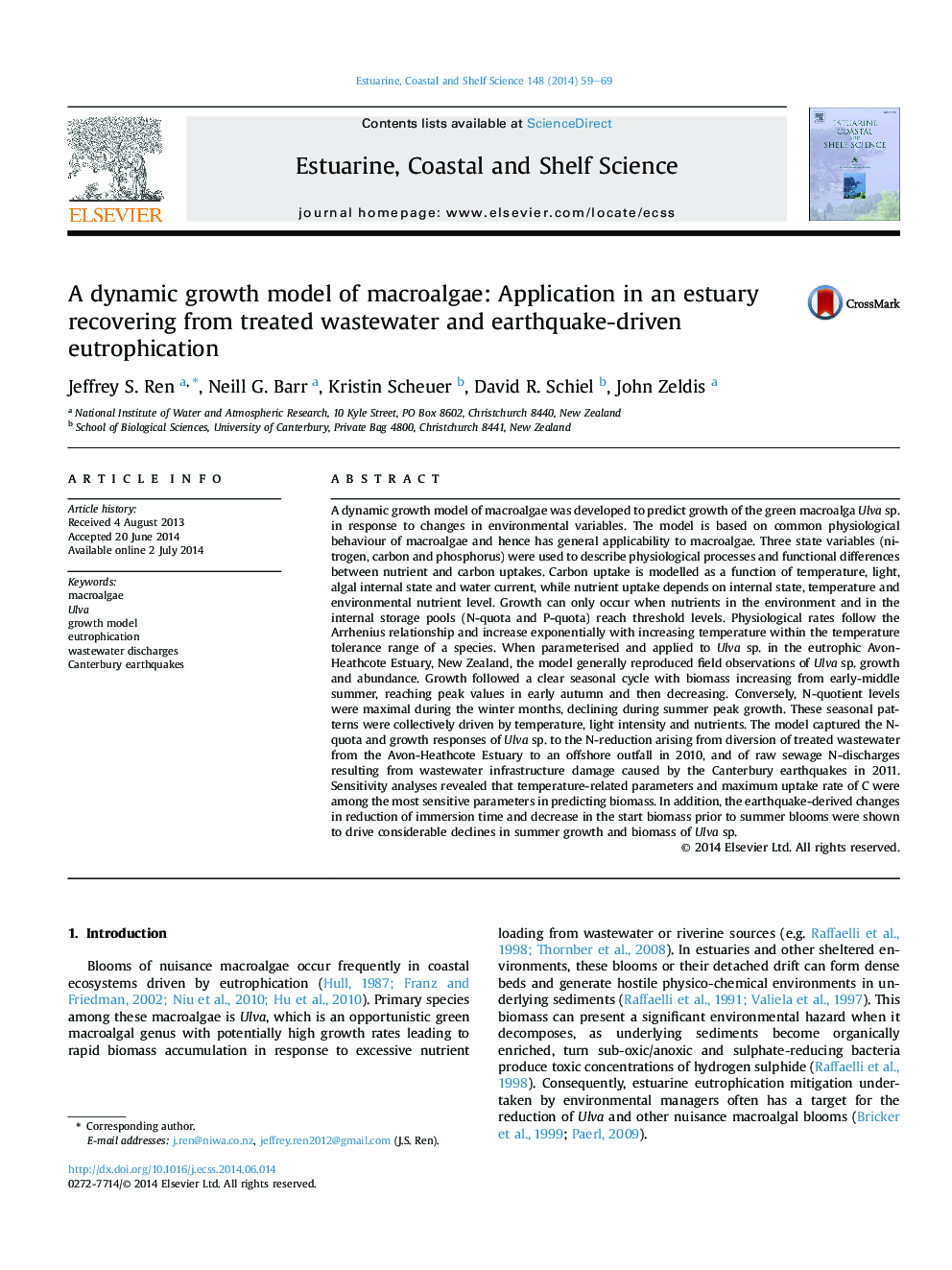| کد مقاله | کد نشریه | سال انتشار | مقاله انگلیسی | نسخه تمام متن |
|---|---|---|---|---|
| 6384852 | 1626648 | 2014 | 11 صفحه PDF | دانلود رایگان |
عنوان انگلیسی مقاله ISI
A dynamic growth model of macroalgae: Application in an estuary recovering from treated wastewater and earthquake-driven eutrophication
ترجمه فارسی عنوان
یک مدل رشد پویا از ماکروآلای: برنامه ریزی در فاضلاب که از پساب تصفیه شده و ائتروفی زدایی از زلزله هدایت می شود
دانلود مقاله + سفارش ترجمه
دانلود مقاله ISI انگلیسی
رایگان برای ایرانیان
کلمات کلیدی
موضوعات مرتبط
مهندسی و علوم پایه
علوم زمین و سیارات
زمین شناسی
چکیده انگلیسی
A dynamic growth model of macroalgae was developed to predict growth of the green macroalga Ulva sp. in response to changes in environmental variables. The model is based on common physiological behaviour of macroalgae and hence has general applicability to macroalgae. Three state variables (nitrogen, carbon and phosphorus) were used to describe physiological processes and functional differences between nutrient and carbon uptakes. Carbon uptake is modelled as a function of temperature, light, algal internal state and water current, while nutrient uptake depends on internal state, temperature and environmental nutrient level. Growth can only occur when nutrients in the environment and in the internal storage pools (N-quota and P-quota) reach threshold levels. Physiological rates follow the Arrhenius relationship and increase exponentially with increasing temperature within the temperature tolerance range of a species. When parameterised and applied to Ulva sp. in the eutrophic Avon-Heathcote Estuary, New Zealand, the model generally reproduced field observations of Ulva sp. growth and abundance. Growth followed a clear seasonal cycle with biomass increasing from early-middle summer, reaching peak values in early autumn and then decreasing. Conversely, N-quotient levels were maximal during the winter months, declining during summer peak growth. These seasonal patterns were collectively driven by temperature, light intensity and nutrients. The model captured the N-quota and growth responses of Ulva sp. to the N-reduction arising from diversion of treated wastewater from the Avon-Heathcote Estuary to an offshore outfall in 2010, and of raw sewage N-discharges resulting from wastewater infrastructure damage caused by the Canterbury earthquakes in 2011. Sensitivity analyses revealed that temperature-related parameters and maximum uptake rate of C were among the most sensitive parameters in predicting biomass. In addition, the earthquake-derived changes in reduction of immersion time and decrease in the start biomass prior to summer blooms were shown to drive considerable declines in summer growth and biomass of Ulva sp.
ناشر
Database: Elsevier - ScienceDirect (ساینس دایرکت)
Journal: Estuarine, Coastal and Shelf Science - Volume 148, 5 July 2014, Pages 59-69
Journal: Estuarine, Coastal and Shelf Science - Volume 148, 5 July 2014, Pages 59-69
نویسندگان
Jeffrey S. Ren, Neill G. Barr, Kristin Scheuer, David R. Schiel, John Zeldis,
